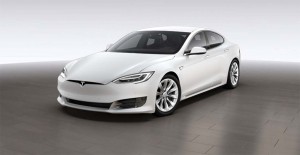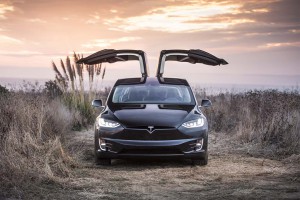
Tesla temporarily disabled auto-braking when it revised its hardware before finish a software upgrade.
After slamming the automaker for some serious concerns over safety, Consumer Reports has upgraded two of Tesla’s battery-electric vehicles.
The non-profit publication slammed both the Tesla Models S and X last month when it discovered the recently updated EVs did not have working automatic emergency braking, or AEB, systems – something that was offered on the older versions of the electric sedan and SUV. Using over-the-air updates, however, Tesla has activated that technology on the newer models.
“It’s uncommon for a newer vehicle to be less capable than an older vehicle, especially when it comes to safety,” said CR’s director of automotive testing, Jake Fisher.
The problem was that Tesla went through some late technology changes as it prepared to update the two electric vehicles last October. That was a response to a fatal crash a year ago involving a Model S whose Autopilot system failed to brake when a truck turned into its path. Tesla split from Mobileye, the Israeli tech firm supplying a camera system used for both Autopilot and the car’s AEB system.
(Tesla facing mounting problems – and union threat – at Fremont assembly plant. Click Here for the story.)
On the updated versions of the Models S and X, Tesla now relies on radar to operate the two safety systems. But it launched the new models without activating AEB so it could finish tweaking the system’s software. That led to a downgrade – and a promise by Tesla to quickly roll out the upgrade. That was completed over the last several weeks.
Even so, the emergency braking system now works at speeds up to only 28 mph, primarily for heavy traffic situations. The old version of AEB worked at speeds up to 90 mph. Tesla plans further over-the-air upgrades that it says will restore full functionality.
As a result, CR has given the new versions of the Model S sedan and Model X SUV partial upgrades of its own, The two vehicles each lost two points on the CR 100-point scale, the Model S, in particular, slipping from its top segment ranking to number two, behind the flagship Lexus LS. Once the high-speed functionality is restored, CR says it may further upgrade the two models.
Observers warned that such a downgrade could have significant impact as Tesla buyers are considered highly motivated by reviews, especially those from influential Consumer Reports.
It’s not the first time Tesla and CR have had a falling out.
In 2014, the magazine declared the Model S the best car it ever tested, “breaking” its 100-point scale. But only a few months later, CR reviewers reversed course, noting that they had pulled the coveted “Recommended Buy” rating for the battery-sedan because of serious quality issues.
Last year, CR upgraded the Model S, saying it had significantly improved quality – but it then downgraded the Model X for a broad array of its own quality issues, notably with the unusual falcon doors for rear-seat access. Even with the new upgrade, the electric SUV ranks low among luxury midsize SUVs.
(CEO Elon Musk predicts Tesla will build 100K vehicles in 2017. Click Here for the story.)
The upgrade comes at a critical time for Tesla. The carmaker is getting ready to begin production of its first mainstream battery-sedan, the Model 3, in July. Industry analysts like David Sullivan, of AutoPacific, Inc., caution that owners will be far less tolerant of quality problems and feature shortfalls than high-line motorists who often have several other vehicles they can turn to if their Tesla is in the shop.
The success – or failure – of the Model S is expected to determine what happens on Wall Street, where investors have driven Tesla shares up to record levels in recent months. It now has a higher market capitalization than either General Motors or Ford, despite disappointing first-quarter earnings results.
(Click Here to see what was behind Tesla’s bigger-than-expected Q1 losses.)



Tesla buyers should not be reading / following ANYTHING CR reports – they flip-flop more than flap jacks.